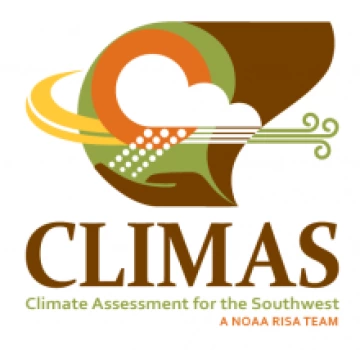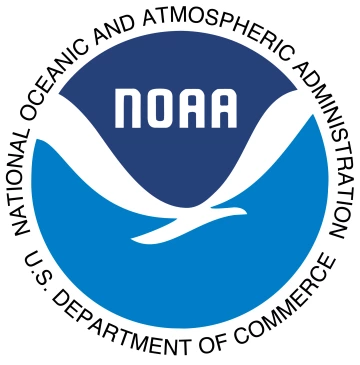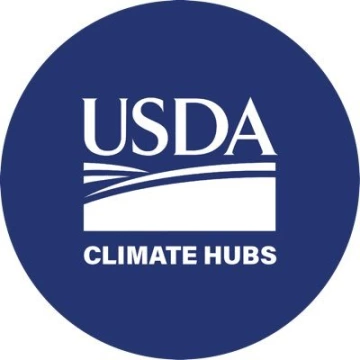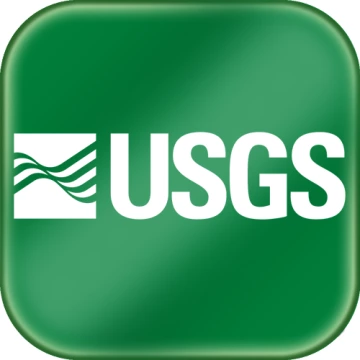< Back to Climate Viticulture Newsletter
Hello, everyone!
This is the August 2021 issue of the Climate Viticulture Newsletter – a quick look at some timely climate topics relevant to winegrape growing in Arizona and New Mexico.
A Recap of July Temperature and Precipitation
Temperatures last month were within 2 °F of the 1991-2020 normal for a swath from south-central Arizona to northeastern New Mexico (light green and yellow areas on map). Bookending this were monthly average temperatures for many areas in western and northern Arizona that were 2 to 4 °F above normal (orange areas), and that were 2 to 4 °F below normal for much of eastern New Mexico (dark green areas). As a comparison, monthly temperatures in July last year were near or up to 2 °F warmer than the 1981-2010 normal for much of northern Arizona and northwestern New Mexico, and 2 to 6 °F warmer for most of the rest of the region.
Without much if any record or near-record heat during the past month, fruit composition may be developing differently this year from how it did last year. We visit this ripening period topic below.
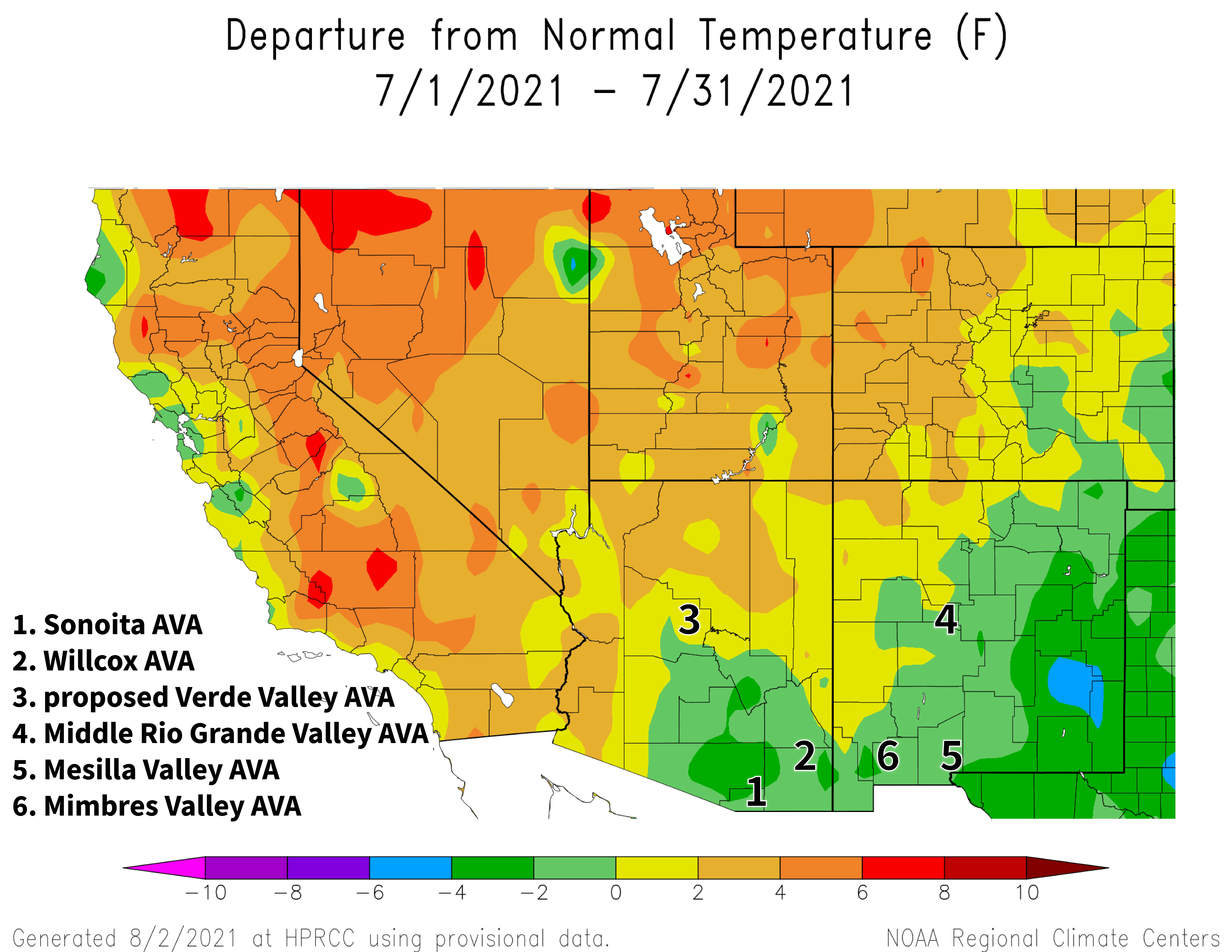
NOAA ACIS
Monthly totals were more than 150% of the 1991-2020 normal for almost all of Arizona (blue and purple areas on map). This also was the case for a few areas scattered across New Mexico, although most locations there received amounts ranging from 50% to 150% of normal (orange, yellow, light green and dark green areas). This is quite a difference from July 2020, when monthly precipitation totals were less than 50% of the 1981-2010 normal for much of Arizona and a few areas in New Mexico due to a late start to and a weak first half of the monsoon.
As it’s been a few years since we’ve had so much rain at this point during the growing season, we’ve been reviewing what the Australian Wine Research Institute has for resources on flooding and wet vintages. That said, having such a wet July this year preceded by one of the hottest Junes on record exemplifies the more variable and extreme summer climate that is anticipated for the Southwest in coming years.
View more NOAA ACIS climate maps
View more-detailed regional maps and station summaries of monsoon rainfall
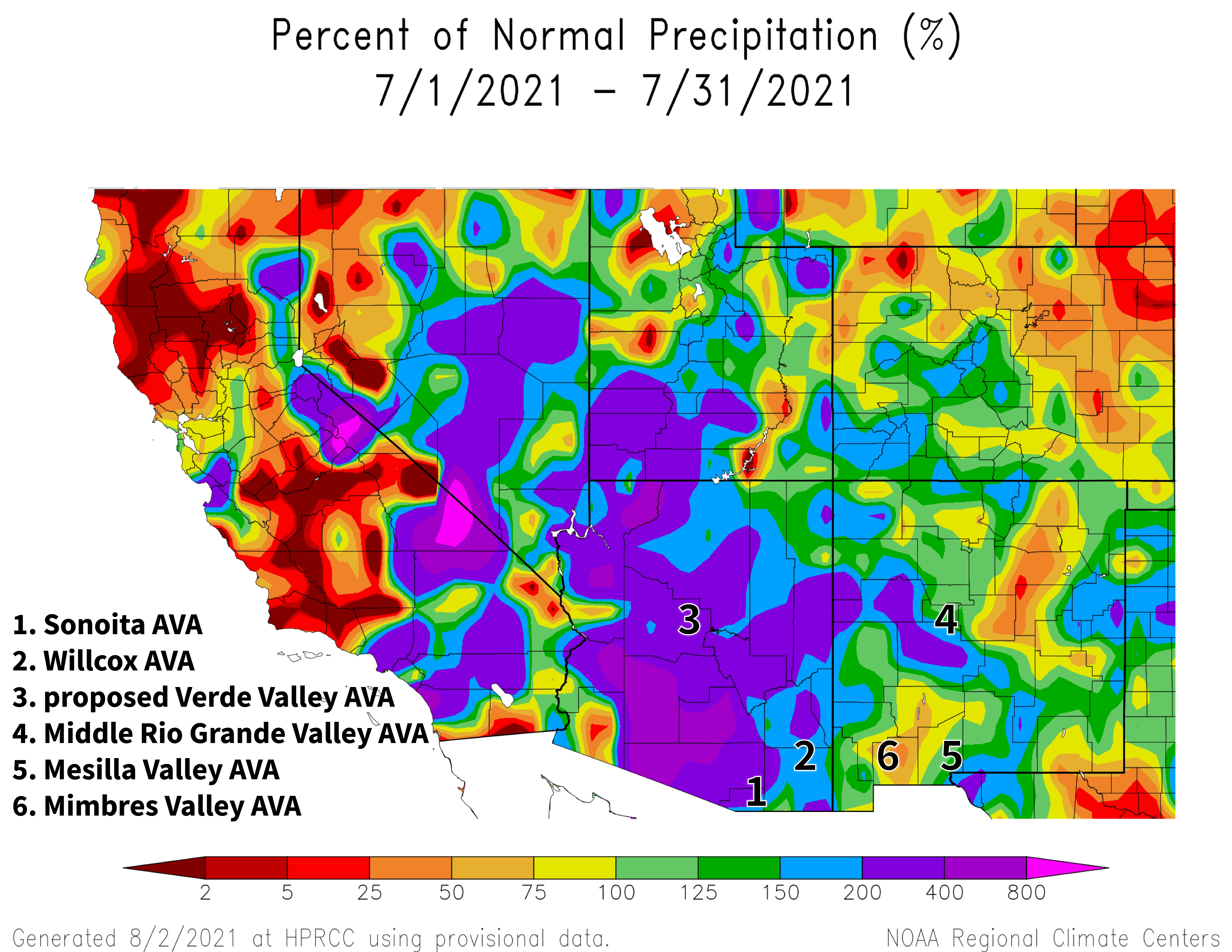
NOAA ACIS
The Outlook for August Temperature and Precipitation
A slight increase in chances for temperatures above the 1991-2020 normal cover all but extreme southeastern Arizona (light orange and orange areas on map). Equal chances for below-, near-, or above-normal temperatures exist for the rest of the region (white area on map), except for extreme southeastern New Mexico, where there is a slight chance for below-normal temperatures (light blue area on map). For reference, monthly temperatures in August last year were at record-high levels, 4 to 8 °F warmer than the 1981-2010 normal for almost all of Arizona and much of New Mexico.
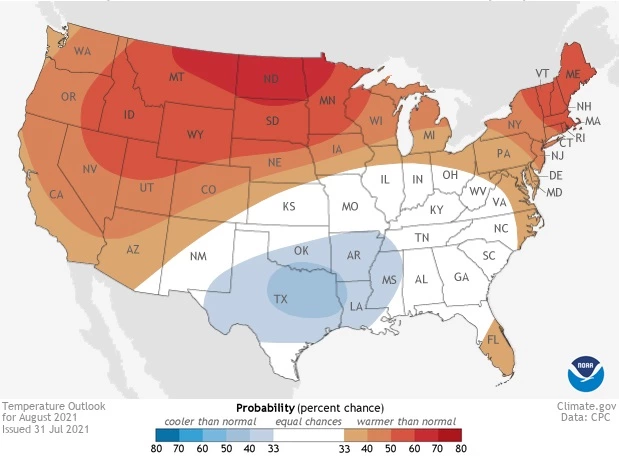
climate.gov
There is a slight increase in chances for precipitation above the 1991-2020 normal for the entire region (light aqua and aqua areas on map). Expectations point to rainfall concentrating more during the second half of the month. Monthly precipitation totals during August 2020 were below 50% of the 1981-2010 normal for almost all of Arizona and New Mexico.
It’s a time of year when timing might be everything. A relatively late budbreak this spring and veraison this summer have set up a relatively late ripening period. How ripening lines up with bursts and breaks in monsoon activity, and the temperature and precipitation conditions therein, may make an impression on fruit quality for this vintage. Having early and late varieties in the vineyard can help hedge any negative effects of when harvest isn’t optimally lined up with the weather.
Read more about the August 2021 temperature and precipitation outlook
To stay informed of long-range temperature and precipitation possibilities beyond the coverage of a standard weather forecast, check in, too, with the six-to-ten-day outlook and eight-to-fourteen-day outlook issued daily by NOAA’s Climate Prediction Center.
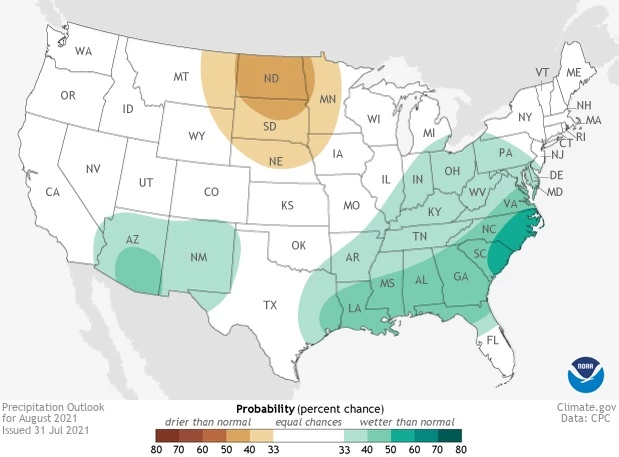
climate.gov
Heat Accumulation and Veraison
For the later varieties, we’ll take a final look this growing season at how heat accumulation since budbreak might influence the timing of veraison. Temperatures since our last check on this suggest that timing of veraison – the start of the ripening period – at this point of this year (green dots on graph) is similar to that of 2020 and 2019 (pink and blue dots, respectively), at least for locations near the AZMet Willcox Bench station. With plainly higher values, veraison dates from 2018 and 2017 (orange and aqua dots, respectively) appear to be the earliest in recent years.
Heat accumulation here is based on the Wang-Engel model, which accounts for the slowing and eventual stopping of vine photosynthesis and growth as temperatures rise above 95 °F (35 °C). Lower forcing unit values from the Wang-Engel model suggest later veraison dates, whether when comparing different years for an individual block or different blocks during an individual year.
Please let us know how the timing of veraison went in your vineyard this growing season relative to past ones. Information like this will be helpful as we work on calibrating this phenology model to local conditions and varieties. Our thanks once again to Jesse Noble at Merkin Vineyards for providing budbreak dates.
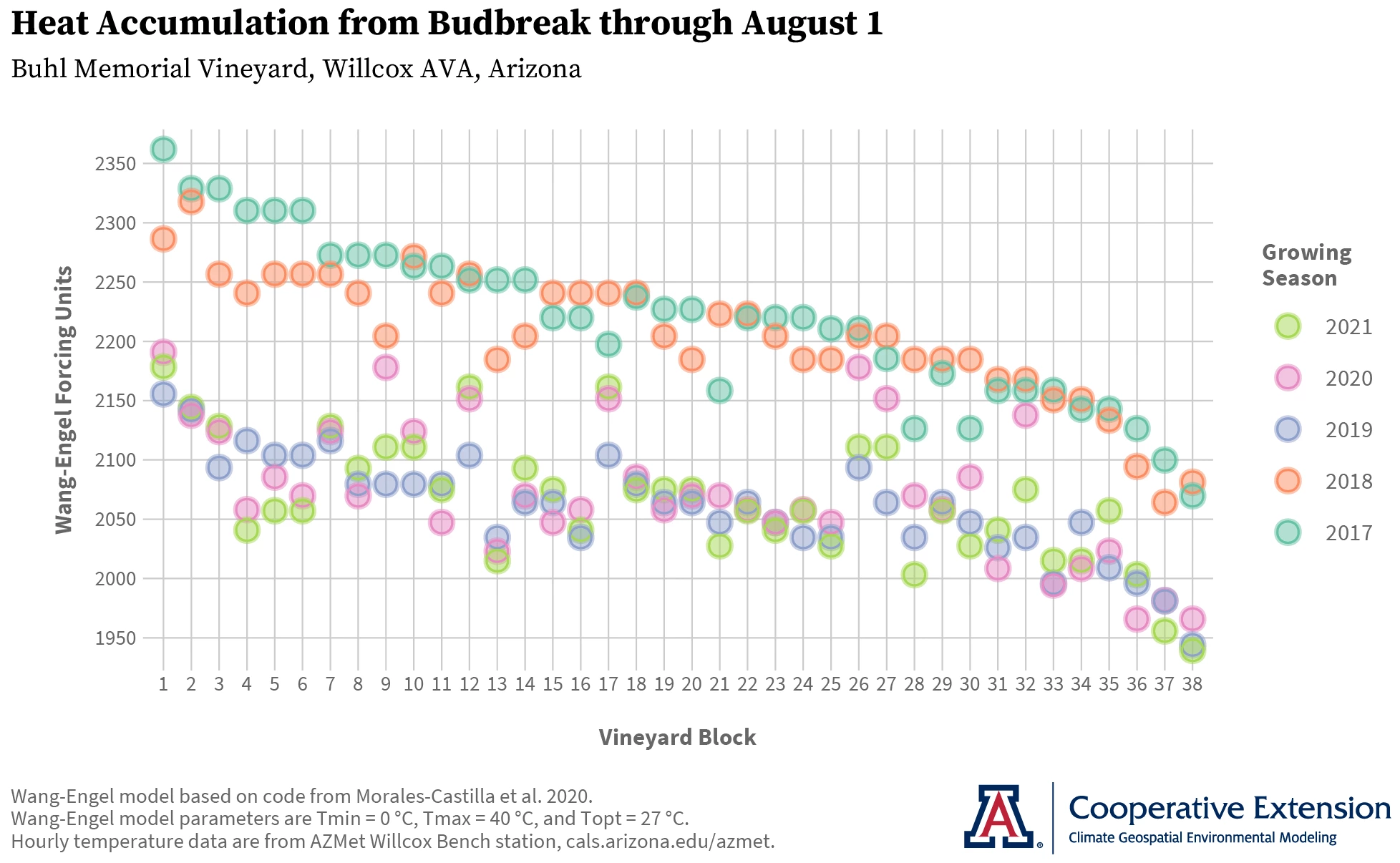
Jeremy Weiss
Temperature Ranges and the Ripening Period
Whether varieties are early or late, temperatures can affect fruit quality through both early morning minimums and afternoon maximums as fruit ripens. This is what underpins our tracking hours of temperatures below 65 °F and above 95 °F.
Once again using temperature data from the AZMet Willcox Bench station, there only have been a few days since July 1 this year with temperatures above 95 °F (yellow and orange bars in top graph). This is considerably less than what was measured in 2020 and more comparable to the 2016 through 2019 growing seasons. There also only have been a few days over the past month with temperatures below 65 °F (light blue, dark blue, and purple bars). Taken together, 2017 looks to be the most analogous to conditions this year in this context.
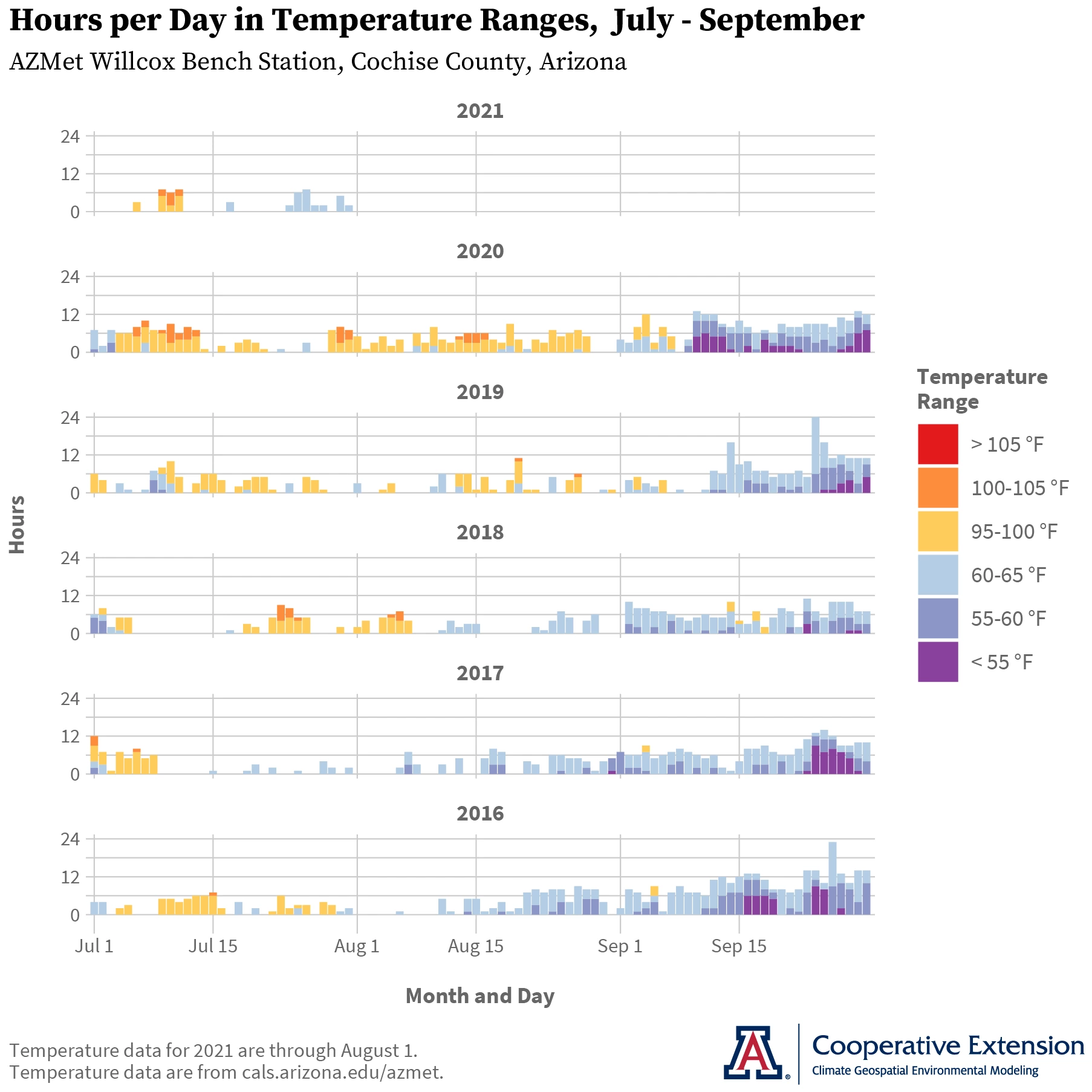
Jeremy Weiss
Recent rainfall put a dent in regional drought conditions and has led to a below-normal potential for significant wildland fires in August for western New Mexico and all but southwestern Arizona. Elsewhere, the potential is normal.
Undergraduate students in the College of Agriculture and Life Sciences at the University of Arizona are looking for internships with businesses and companies in the viticulture and winery industries during 2021. Please contact Danielle Buhrow, Senior Academic Advisor and Graduate Program Coordinator in the Department of Agricultural and Resource Economics, for more information.
A recent donation of 40 acres near Willcox plus recent funding from the USDA-AZDA Specialty Crop Block Grant program are some of the first steps of a newly formed public-private collaboration towards a Viticulture Center of Research (VCOR) that will help support winegrape growing in Arizona. The funding will provide resources to convene the state viticulture industry and its supporters in the latter half of 2021 to determine common interests and develop plans for moving the VCOR project forward. Another first step is to gather letters of support that demonstrate backing of the VCOR project from the Arizona viticulture industry to relevant leaders in the University of Arizona. To learn more about the VCOR project and how to contribute a letter of support, please contact Joshua Sherman, commercial horticulture agent with University of Arizona Cooperative Extension.
For those of you in southeastern Arizona, Cooperative Extension manages an email listserv in coordination with the Tucson forecast office of the National Weather Service to provide information in the days leading up to agriculturally important events, like days with severe monsoon storms or excessive heat. Please contact us if you'd like to sign up.
Please feel free to give us feedback on this issue of the Climate Viticulture Newsletter, suggestions on what to include more or less often, and ideas for new topics.
Did someone forward you this newsletter? Please contact us to subscribe.
Have a wonderful August!
With support from:
